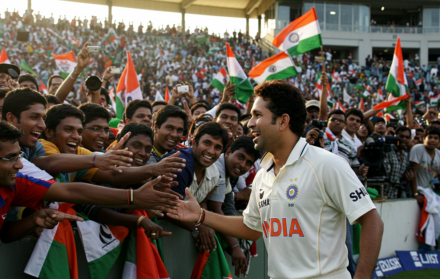
Why Rest Is Important in Cricket and How to Balance It with Practice
Cricket, a sport demanding physical endurance, mental acuity, and precision, places considerable strain on players’ bodies and minds. Amidst the rigorous training schedules and intense matches, the significance of rest often becomes overlooked. Yet, understanding the pivotal role of rest in cricket is paramount for players to sustain peak performance and avoid burnout. In this article, we delve into the intricacies of why rest is important in cricket and explore strategies to strike a harmonious balance between rest and practice.
Firstly, acknowledging the physiological demands of cricket illuminates the necessity of adequate rest periods. The dynamic nature of the sport, involving sprinting, quick reflexes, and explosive movements, exerts tremendous strain on muscles, joints, and connective tissues. Without sufficient rest, players risk overexertion and susceptibility to injuries, hampering their ability to perform consistently at the highest level. Furthermore, rest plays a pivotal role in the body’s recovery process, facilitating muscle repair, glycogen replenishment, and hormonal balance essential for optimal performance.
Beyond the physical realm, the mental aspects of cricket underscore the importance of rest. The sport’s strategic intricacies, coupled with the pressure of high-stakes situations, can lead to mental fatigue and diminished focus if not adequately addressed. Rest periods provide players with the opportunity to unwind, recharge, and maintain mental clarity, crucial for making astute decisions on the field and sustaining concentration throughout lengthy matches.
However, balancing rest with practice presents a delicate challenge for cricketers striving for continual improvement. While rest is essential for recovery and performance, excessive downtime can impede skill development and hinder progress. Thus, cultivating a nuanced approach that integrates restful periods into training regimens is essential. This entails recognizing the importance of quality over quantity in practice sessions, prioritizing efficient and focused drills over prolonged, exhaustive workouts.
Moreover, adopting periodization techniques can aid in optimizing rest and practice schedules. Periodization involves structuring training cycles to incorporate phases of high intensity, moderate intensity, and rest, aligning with the demands of the cricket season. By strategically alternating between periods of intense training and adequate rest, players can maximize performance gains while minimizing the risk of burnout and injury.
In addition to physical and mental rest, the importance of sleep cannot be overstated in cricket. Quality sleep plays a pivotal role in recovery, cognitive function, and mood regulation, all of which are essential for peak athletic performance. Therefore, prioritizing sleep hygiene practices, such as maintaining a consistent sleep schedule, creating a conducive sleep environment, and minimizing screen time before bedtime, is paramount for cricketers aiming to optimize their restorative rest.
Why Rest Is Important in Cricket

Rest is not just a break from action; it’s a crucial element in cricket. In this section, we’ll uncover the significance of rest in the sport, exploring its impact on physical recovery, mental well-being, and injury prevention.
From giving tired muscles time to rejuvenate to maintaining players’ mental sharpness, rest plays an essential role in preserving the overall performance and longevity of cricketers. So let’s delve into the reasons why adequate rest is of utmost importance on the cricket field.
Physical Recovery
Physical recovery is vital in cricket to ensure players can excel and minimize the risk of injuries. Here are some essential steps to boost physical recovery:
- Schedule proper rest days: Make sure to include regular rest days in the training schedule to provide the body with sufficient time for repair and regeneration.
- Listen to your body: Pay close attention to any signs of fatigue or overuse and make necessary adjustments accordingly.
- Optimize sleep: Strive for quality sleep of 7-9 hours to facilitate muscle repair and overall recovery.
- Incorporate active recovery: Incorporate low-intensity exercises such as yoga, stretching, or light swimming to stimulate blood flow and promote muscle relaxation.
- Prioritize rest during the off-season: Utilize this time to grant the body extended rest periods and allow muscles ample opportunity to grow and fully recover.
- Seek professional guidance: Consult with coaches or sports medicine professionals to develop a personalized recovery plan tailored to your specific needs.
Mental Well-being
Mental well-being plays a pivotal role in cricket for achieving optimal performance. Rest is a crucial factor in preserving and nurturing mental health. It grants players the opportunity to recharge, alleviate stress, and decrease the chances of burnout.
Moreover, rest amplifies concentration, focus, and decision-making capabilities on the cricket field. In order to prioritize mental well-being, players should adhere to the following guidelines:
- Establish a regular schedule for rest days to unwind and revitalize.
- Pay attention to their bodies and take breaks whenever they feel fatigued or overwhelmed.
- Enhance sleep quality to enhance cognitive function and emotional stability.
- Include activities such as meditation or yoga in their recovery routine.
- Seek professional assistance to manage mental health and address any concerns.
Rest is indispensable for promoting mental well-being and overall performance in the game of cricket.
Injury Prevention
- Injury prevention is of utmost importance in cricket to ensure players can perform at their peak and avoid long-term damage.
- Before engaging in practice or games, it is essential to warm-up and stretch to prepare the body for physical activity.
- To enhance stability and reduce the risk of strains and sprains, include strength training exercises that focus on core and lower body muscles.
- Minimize the impact on joints and muscles by using proper technique and form while batting, bowling, and fielding.
- Prevent overuse injuries by taking regular breaks during intense training sessions.
- Reduce the risk of head and body injuries by utilizing protective gear like helmets and pads.
- Support overall health and aid in muscle recovery by staying hydrated and maintaining a balanced diet.
- Swiftly address any minor injuries or discomfort to prevent them from escalating into more severe problems.
How Does Rest Impact Performance in Cricket?

Rest is crucial in cricket, as it directly affects performance. Understanding how rest impacts cricket performance is essential in ensuring players are at their best on the field. Adequate rest allows players to recover physically and mentally, reducing the risk of injuries and fatigue. It also helps in maintaining focus and concentration during matches.
The impact of rest on performance is significant. Lack of rest can lead to decreased reaction times, slower decision-making, and poor overall performance. Balancing rest with practice is essential to achieve optimal performance on the field.
To maintain this delicate balance, players should follow a structured training schedule that incorporates both rest and practice. They should prioritize sleep, as it plays a crucial role in physical and mental recovery. Additionally, incorporating active recovery techniques can further aid in restorative processes. Moreover, it is important to listen to the body’s signals for rest and give it the necessary time to recuperate.
By incorporating these strategies and understanding the impact of rest on performance, cricket players can enhance their overall performance and maximize their potential on the field.
How to Balance Rest with Practice in Cricket?
In the world of cricket, finding the delicate balance between rest and practice is crucial for optimal performance. So, how can we strike that balance? Let’s dive into this section where we’ll uncover some valuable insights.
From scheduling proper rest days to listening to your body, optimizing sleep, and incorporating active recovery, we’ll explore practical strategies to ensure players can give their best on the field. Plus, we’ll shed light on the importance of prioritizing rest during the off-season and seeking professional guidance. Get ready to unlock your potential in cricket!
Schedule Proper Rest Days
Scheduling proper rest days is essential for cricketers to maintain their physical and mental well-being, prevent injuries, and optimize performance.
- Plan ahead: Create a schedule that includes regular rest days in between training sessions and matches.
- Listen to your body: Pay attention to signs of fatigue, exhaustion, or muscle soreness, and take rest accordingly.
- Optimize sleep: Ensure enough sleep to aid in muscle repair, glycogen restoration, and hormone regulation.
- Incorporate active recovery: Engage in low-intensity exercises like stretching, walking, or yoga to promote blood flow and reduce muscle stiffness.
- Prioritize rest during the off-season: Take longer periods of rest to allow muscles and the central nervous system to recover fully.
- Seek professional guidance: Consult with coaches, trainers, or sports physicians to create a tailored rest and recovery plan.
Listen to Your Body
Listening to your body is crucial in cricket for optimizing performance and preventing injuries. When you “listen to your body” and pay attention to its signals, you can effectively optimize your performance and avoid potential injuries.
It is important to recognize when your body feels fatigued or sore, as these sensations serve as reminders that rest is necessary. Ignoring these signals can lead to muscle damage and hinder your ability to perform at your best. By actively “listening to your body,” you can ensure that you provide it with the rest it needs for proper recovery and growth. Rest days play a significant role in allowing your muscles to recover, grow, and repair tissues.
Additionally, they replenish glycogen stores and contribute to the optimal functioning of both your central and peripheral nervous systems. Ultimately, when you “listen to your body,” you enable it to perform at its peak by avoiding overexertion and promoting overall well-being.
Optimize Sleep
To optimize sleep for better cricket performance, it is important to follow these steps:
- Establish a consistent sleep routine by going to bed and waking up at the same time every day.
- Create a sleep-friendly environment by keeping the room dark, quiet, and at a comfortable temperature.
- Avoid electronic devices, caffeine, and stimulating activities before bedtime.
- Practice relaxation techniques, such as deep breathing or meditation, to help you unwind and fall asleep faster.
- Ensure you have a comfortable mattress and pillow that support your body and promote quality sleep.
Incorporate Active Recovery
Incorporating active recovery into your training regimen can greatly benefit your performance in cricket. Here are a few steps to help you incorporate active recovery effectively:
- Include light exercises like walking or stretching on rest days to increase blood flow and promote muscle recovery.
- Try foam rolling or using a massage ball to release tension and knots in your muscles.
- Engage in low-intensity activities such as swimming or cycling to promote circulation and reduce muscle soreness.
- Practice yoga or Pilates to improve flexibility, balance, and core strength.
- Don’t forget to hydrate properly and nourish your body with nutritious foods to support the recovery process.
Pro-tip: Remember, active recovery is key to giving your muscles the chance to grow and repair, ensuring you perform at your best during your next cricket match. Incorporate active recovery into your routine regularly for optimal results.
Prioritize Rest During Off-season
Resting during the off-season is crucial in cricket to prioritize rest and allow the body and mind to recover from the demands of the game. It is important to prioritize rest during this time to help prevent burnout and reduce the risk of injuries.
By doing so, it gives the muscles a chance to grow and repair, replenishes energy stores, and ultimately enhances overall performance. During the off-season, it is essential for cricketers to incorporate rest days into their schedule, listen to their body’s cues for rest, optimize sleep, engage in active recovery activities, and seek professional guidance to ensure they are prioritizing rest and getting the appropriate amount of rest needed to perform at their best during the next season.
Seek Professional Guidance

Seeking professional guidance is paramount when it comes to finding the right balance between rest and practice in cricket. Coaches and trainers, who are professionals in their field, possess the necessary expertise to customize training programs and recovery strategies based on individual requirements.
They are capable of evaluating the player’s physical condition, monitoring fatigue levels, and providing valuable advice on when and how much rest is necessary. Seeking professional guidance also ensures that players receive proper instructions on nutrition, injury prevention, and overall performance optimization. With their invaluable support, players can effectively utilize their rest days, enhance recovery, and perform at their utmost potential on the field.
Frequently Asked Questions
Why is rest important in cricket and how to balance it with practice?
Rest is crucial in cricket to optimize performance and prevent burnout. It allows the body to repair and strengthen itself, replenish energy stores, and recover physically and psychologically. Rest also helps prevent overuse injuries and reduces the risk of mental and physical fatigue. Balancing rest with practice involves finding the right amount of downtime between games and training sessions, experimenting with the number of games played per week, and taking breaks during the season.
What is the difference between immediate and long-term recovery in cricket?
Immediate or short-term recovery in cricket occurs within hours after exercise and includes low-intensity exercise and a cool-down phase. It helps the body adapt to exercise stress and replenish energy stores. Long-term recovery, on the other hand, is built into a training schedule and can last days or weeks. It involves rest days, easier workouts, and proper nutrition to allow the body to repair tissue and fully recover.
How does rest benefit the performance of high-level cricket athletes?
Rest plays a crucial role in optimizing the performance of high-level cricket athletes. It allows muscles to repair and grow stronger by fixing microscopic tears caused by intense workouts. Rest also improves focus, motivation, and prevents overuse injuries. Additionally, quality rest helps maintain hormone levels, including human growth hormone, which is essential for tissue repair.
How often should cricket players incorporate rest days into their training schedule?
It is recommended for cricket players, including professional players and non-professional players, to incorporate at least one rest day per week into their training schedule. Rest days give muscles a chance to grow, prevent overtraining syndrome, reduce the risk of injury, and allow bones to strengthen and remodel.
What are the signs of burnout in cricket players and how can it be prevented?
Signs of burnout in cricket players include decreased performance, constant fatigue, difficulty sleeping, aching muscles, hormone imbalances, and loss of appetite. To prevent burnout, it is important to find a balance between playing, practicing, and taking breaks. Cutting back on games and training, experimenting with the number of games played per week, and taking breaks during the season can help alleviate mental and physical strain.
How can a cricket player determine the ideal balance between rest and practice?
Determining the ideal balance between rest and practice in cricket depends on factors such as individualized support, sporting goals, seasonality, and personal preferences. By monitoring workouts with a training log, listening to their body, and seeking guidance from a coach or sports professional, a cricket player can find the sweet spot that maximizes performance gains in the gym while allowing for proper rest and recovery outside of it.





